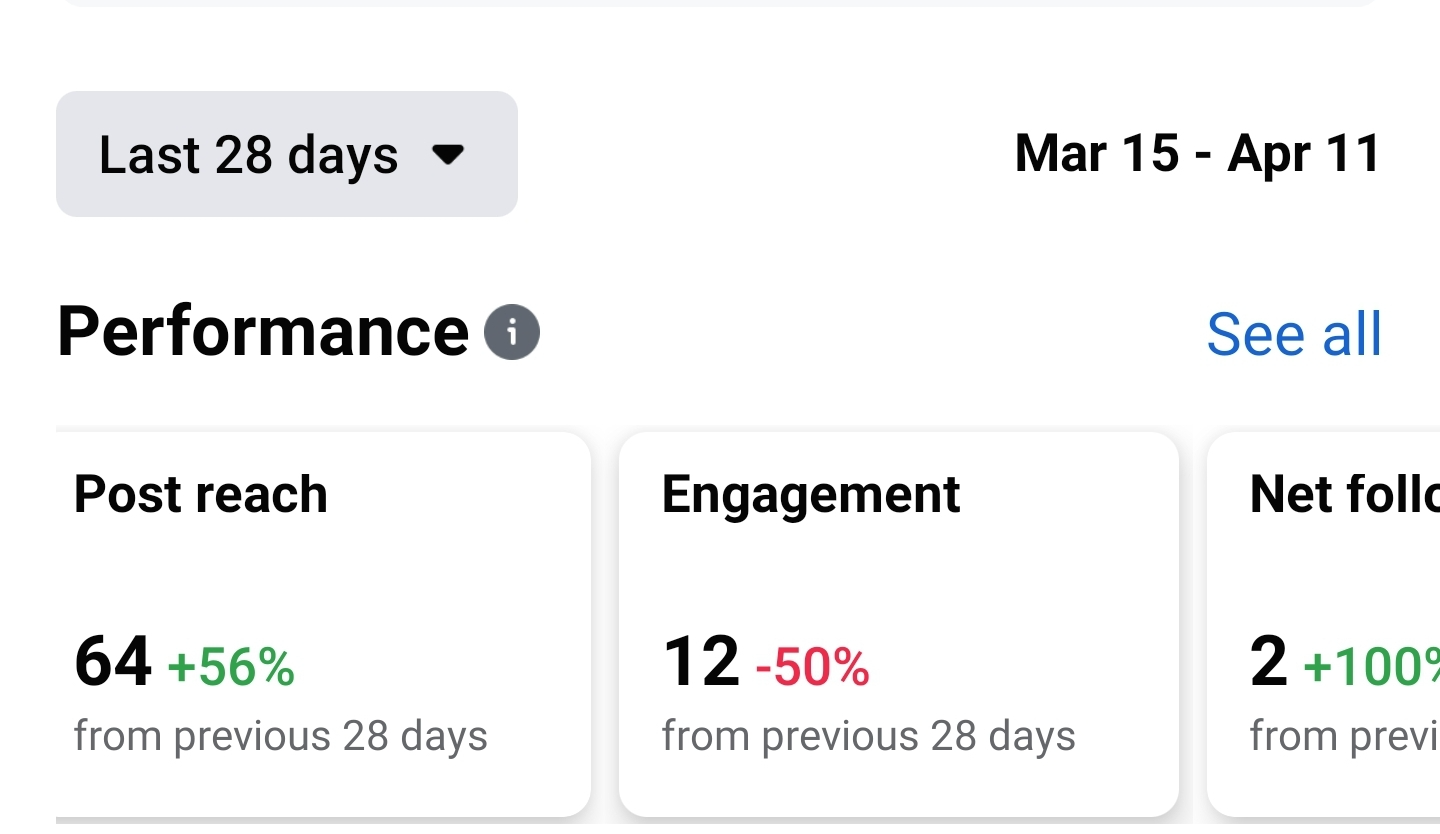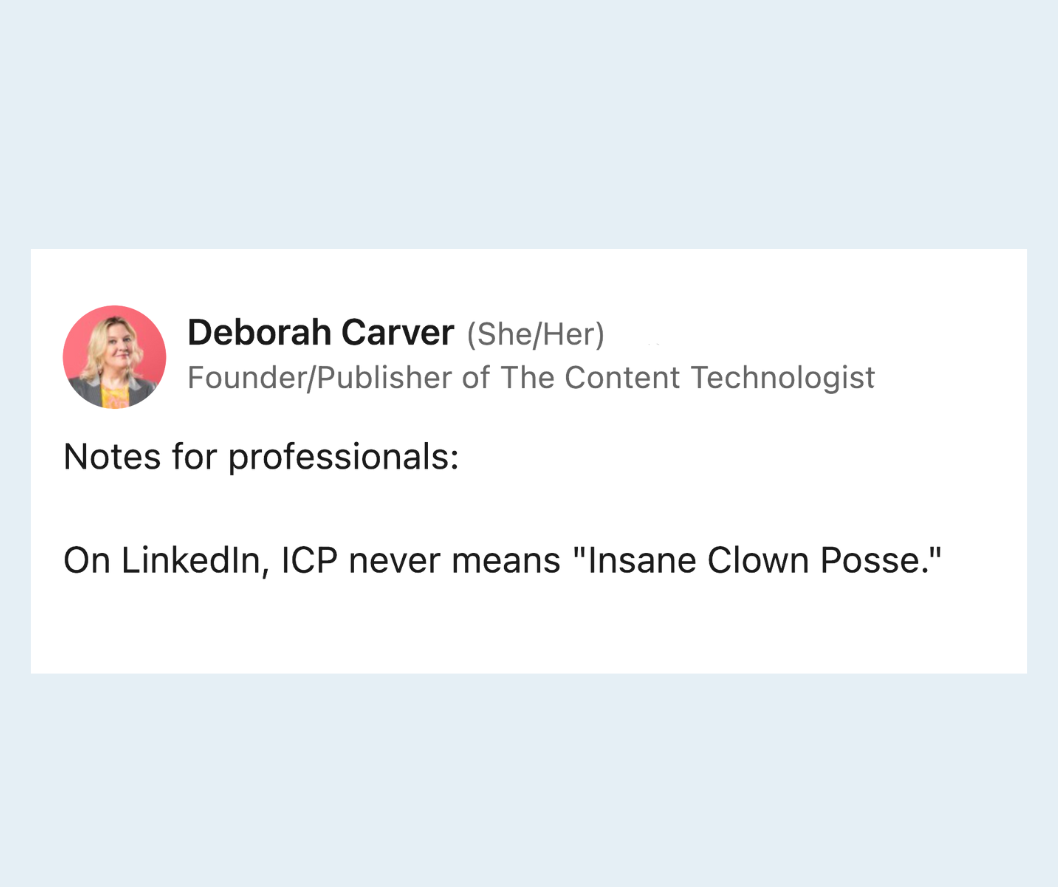This essay originally was published on August 24, 2023, with the email subject line "CT No.181: Our brand new social sausage recipe."
We all know that social media is undergoing change. Less obvious are the community-specific attitudes toward social that are contributing to trends like large-scale platform migration and inspiring some users to abandon posting altogether. If the Facebook-era calls for a pivot to video have shown us anything, the mythology that new social media features immediately inspire wide-scale behavior and cultural change isn’t just misleading; it can have a serious, destructive impact on businesses that jump in without first assessing the waters.
Scary as platform collapse can be, our current reset period offers some elucidating insights if you look closely at the granular details. Beyond the nostalgia for functional, less maddening feeds during our current reset, we’re also seeing a growing sense of exhaustion at the sheer amount of platforms to navigate, content that users must filter to find basic information, or accounts with similar interests. In this fatigue-laden environment, it’s unlikely that plainclothes users will maintain deep engagement on several platforms. We reckon it’s a safer bet to know where your people flock and to identify their watering holes of choice. We're also at the point where, to grow the business in the way we want, we need to expand our reach.
From our view, the resulting resistance toward social isn’t going anywhere. Even for content professionals who have developed social media savvy, major adjustments are on the horizon. That challenge may seem daunting on the surface, but it also means fresh data about user preferences will become available. With that new data, content teams can sunset social strategies that suck up resources without producing results and free themselves of pointless work.
Whether we like it or not, social platforms hold an integral role in the who, what, when, where, why, and how of content development and distribution. Oddly, it’s this damned-if-I-do, damned-if-I-don’t dilemma that has us at The Content Technologist excited for the opportunity to test ideas, mess up, fail, and maybe even accrue some loyal fans along the way. We're slowly rolling out to more social channels, and we wanted to let you in on our planning.
Optimists at heart, we’ve collected a few thoughts below about the looming social media situation and the experiments we’re conducting to better understand it.
Harvesting every part of the media production animal
In terms of immediate, top-level social media strategy, we’re:
- Planning more short-form text content (easier to send, especially at more frequent intervals and across different platform) to be distributed across the many Twitter clones
- Experimenting with vertical video (TikTok changed the game, might as well get a first-hand experience of why)
- And introducing new audiences to our longer, narrative-driven newsletters that the skip to the deep cuts and, more importantly, gives our reports a human face
It’s a rough content strategy that matches what we know works on social and what we can create quickly and easily, with the goal of expanding our audience across platforms.
Recycling material is much easier than creating from scratch
Content creation processes may feel discrete at the start, but when used as a content pillar or collective research strategy, they can mutually support and inform each other. Whether it’s by
- creating content that can be repurposed later (thanks, Marvel!)
- using the lengthy production timelines some projects demand to organize smaller, piecemeal investigations
- learning how to translate from video to text and back,
we trust that iterative production will give us a deeper grasp of our overall business — not just our promotion strategy.
When we are iterating and translating, that doesn't mean posting screenshots from one platform onto another. Sure, that tactic might seem expedient, especially during a time when people are always scanning but not necessarily comprehending. That said, it’s also a missed opportunity to discern and implement platform-specific content strategy across distinct media environments.
Tackling the field of newsletter social networks
Tandem to our recycling strategy is a preference for content that can be easily transformed, as well as pursuing channels that require light modifications, like formatting changes, but ultimately distribute the same offerings to platform-specific audiences.
Yes, we’ll continue publishing our beloved Content Technologist newsletter, but it also makes sense to put out feelers on newsletter platforms like Medium, Substack, and LinkedIn where dedicated groups of content professionals have made their home. Our monthly newsletter, Content Pros Update, is distributed identically across the newslettersphere, improving content visibility within self-contained social networks.
By placing the same content across different but functionally similar platforms, we’re able to gather measurable feedback about how users who belong to the same community or group behave in each. The ability to compare and contrast through these media environments shouldn’t be underestimated, as it helps us demystify what will work in the future.
Find Content Pros Update on Substack, Medium (coming soon) and LinkedIn, or just ensure you're subscribed in your Account section.
Iteration is audience-agnostic and time-agnostic
Yes, eventually content will have to be shaped for the particular platforms and audiences to work its magic. That said, we have no plans to tailor content for platforms or their local audiences in our social content production cycle — we’ll defer that task until it’s time to curate and edit.
In our estimation, the current atomization of social media channels is a boon for content producers. It’s an opportunity to test the same idea in different stages with unique clusters of users. To use an analogy, let's think about content production more like cooking, and pretend that one of the biggest, most popular restaurants in town closed. Its clientele of writers, students, and potential clients are searching for new dining options. We want them to consider us as a replacement for their regular haunt.
As media chefs, the goal of our three-prong strategy is to create digestible morsels that let our readers know what we’re working on and why it’s relevant to them. We also want guests to walk away thinking our content was delectable enough to come back for another bite (also known as hitting the subscribe button).
Because of the size of our readership and means of delivery, we are clearly cooking for a banquet, so we have to satisfy a range of appetites, dietary restrictions, and cultural expectations — all with limited ingredients (labor power, technology, cash flow, etc.) If we narrow our scope too much, we risk alienating a potentially impactful group, but if we go too wide, we may inadvertently cause further fracturing among our table-sharing users. So how did we balance these high-stakes demands?
We think the answer is embedded in the banquet format itself. Let users tell you what they like, want, and expect from the choices they make with their consumption habits. Present a range of options that are within your means, but vary in terms of their level commitment, affordances, and appeal.
The advantage that we content professionals have had for many years that is only recently making its way into kitchens is user data. Though social platforms have changed, people are still clicking, liking, and resharing content. And with these platforms in such disarray, many users are searching for unfamiliar experiences while, too, pining for the authentication participation they remember. To return to our chef example one last time, it’s important to leave the kitchen and ask your guests about their experience! It’s social media: the value of face-to-face interactions cannot be ignored.
Find us on BlueSky, Substack Notes, Threads and Mastodon.
On social media, you are the audience... for once
Among content professionals, we are frequently reminded that we are not the end-user, meaning that our personal preferences are distinct from our audience’s.
But as self-employed content professionals in the B2B space, social media offers a notable exception to this you-are-not-the-user rule. More often than not, we are at minimum friends, colleagues, or distally associated with the users because they are our clients. Our career experience means we understand our own and our audience’s pain points, and should use that knowledge to inform where we invest our limited time, energy, and resources. Without the right support, social media management can be draining, disheartening and bleak. Let's not subject ourselves to that kind of torture.
As user and creator, we encourage you to ask yourself some questions about your limitations. Aside from having the ability to maintain two separate profiles, do you really want to run two or more social media accounts on the same platform? Aside from being told about best practices, are you really able to maintain a firewall between your personal and professional posting?
From there, we recommend a positive reframing of the social media management issue. We ask what we (and our clients!) enjoy about their work and explore ways to share that authentic joy, curiosity, and excitement on social. Though it probably goes without saying, part of our pivot to TikTok is acknowledging that we, too, like (maybe love?) TikTok.
As much as we might be uncomfortable getting behind the camera, editing the cuts, or even sharing personal information, the fact is that promoting our business is part of jobs — it absolutely must be done if we want to succeed.
Our iterative approach is meant to make the process of putting ourselves out there much easier. Don’t like your first stab at making a TikTok? Reduce that clip to a still and post it on Instagram with a commiserative note about how you tried, failed, felt humiliated, but decided to post anyway. (Oddly, in the post-Twitter, post-Tumblr world, solidarity is still widely in vogue.)
With images and video content where you have to speak in front of the camera, it may be useful to get yourself some props and a costume, or perhaps find an AR filter that accentuates your best features. It helps to look and feel the part, but also making at-home theater is fun once you can acclimate to the idea that, until you press publish, no one else is watching.
Technically, because we are on Threads, we are also on Instagram.
Placing stock in TikTok
Love it or hate it, among social media platforms, TikTok is clearly an exceptional case. The short version is that it works so differently from its competitors, but it attracts new audiences like wildfire. Strategies that once worked on Instagram or Facebook bear no resemblance to what has viral strength on TikTok. (Also, no one has a Facebook strategy anymore, from what we can tell.)
TikTok isn’t as readily rolled into a strategy as some of our above examples. But, because it has its own B2B dynamics and it’s somewhat maddeningly popular, it’s worth understanding its unique algorithms and broad spectrum of audiences. The app itself may not last forever, but future social media will look far more like the ‘Tok than pleasant scrolls through the feeds of yore.
Even if you’re just posting on TikTok for fun or as an experiment only tangentially related to business, that is more than enough. You’re immersing yourself in the experience, and that may inadvertently illuminate how your business can use TikTok as a tool. (Of course, be careful not to get sucked too far into the endless media content portal.)
You can find us on TikTok, too.
Just enough social
We understand that the point of social media is to be social, to comment, like, and share with other users on the platform. Posting and ghosting, an easy way to distribute content without actually engaging with comments, does do the trick of acting like a human in conversation online.
But we also know that you can have a presence or portfolio on a number of channels without being active all the time. These updates-only social spaces can help audiences assess who you are quickly, without, y’know, having to read an entire website or even commit to a follow.
Our recommendation: Pick one or two social media channels to spend time with at least every other day, and post, comment, and like your heart out. (Shout out to my former adviser and friend Shayla Thiel-Stern for reinforcing this idea in her newsletter.) The channel you pick should be the one where your audience is most active – and for The Content Technologist, that means LinkedIn. You may groan at LinkedIn’s boosterism and have trouble seeing past the schlocky corporate speak, but the fact is that it’s an active B2B social network that has stayed more or less stable for years. It’s good for business, and if you follow the right people, it’s not half bad.

Use your other social media channels to maintain a presence, similar to our newsletter cross-posting strategies. You don’t have to be on social media all the time, but you do have to invest enough time to understand why people use and like social channels. Even if their proprietors are evil. Even if you may feel like it’s not getting anywhere. Believe us: Have content, will travel. Showing up with posts is half the battle.
Deborah Carver is the publisher and Wyatt Coday is the managing editor of The Content Technologist. This post was transcribed and edited from a conversation between the two of us – and all thanks to Wyatt for introducing me to this brilliant newsletter production technique.
Hand-picked related content








